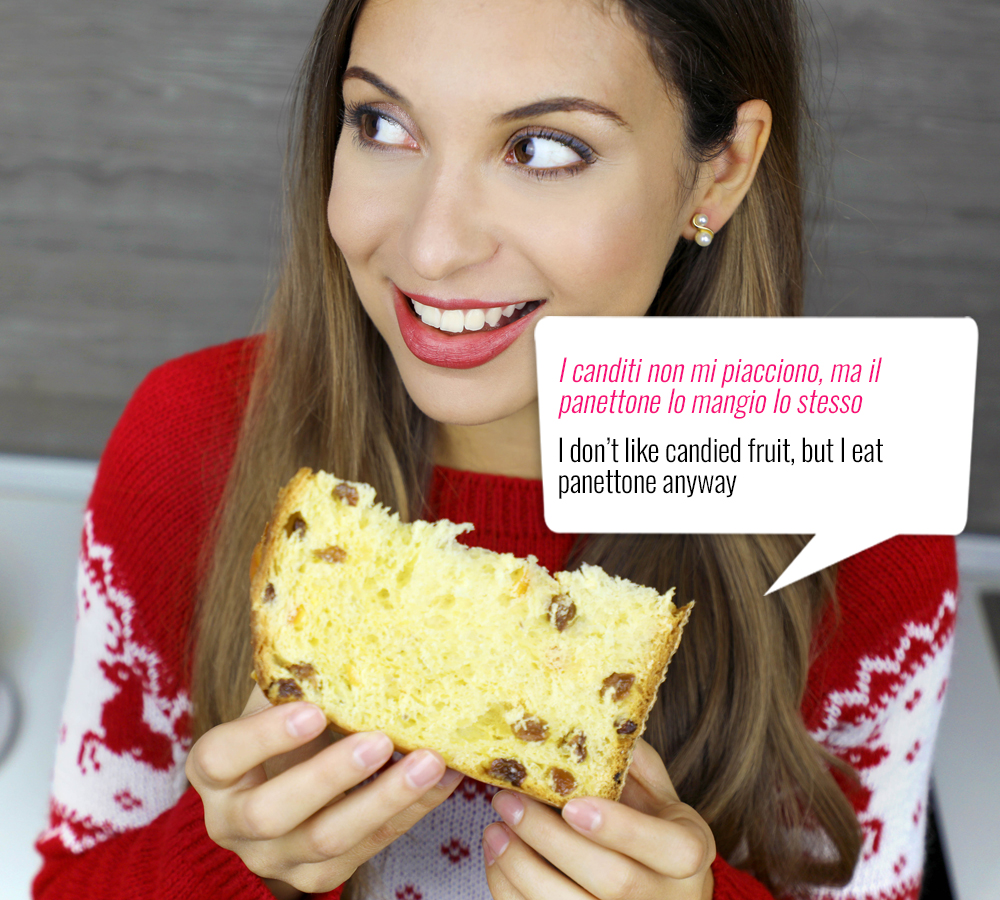Today’s word is very tasty and sweet! Canditi(singular: candito) are those little candied morsels you find in traditional panettone, along with sultanas. Canditi (kan-dee-tee) are just chopped candied fruit of all kinds, which are broadly used in patisserie not only in Italy but around the world.
People’s relationship with canditi is one of love and hate because many of us don’t like them, perhaps because they are chewy, perhaps because of the intensity of their taste. So don’t be surprised if, around Christmas, you hear someone saying non comprare il panettone con i canditi: non mi piacciono (“don’t buy panettone with candied fruit pieces, I don’t like them”). Children especially are not too fond of them, so it’s not unusual to see them togliere i canditi dalla fetta di panettone (“picking candied fruit out of their panettone slice”).

The word candito comes from the verb candire, which is of Arab origins. Linguists say it derives from qandat, which in turn comes from the Sanskrit khandakah, “sugar.” Using honey and palm syrup to preserve fruit was a procedure known already by the ancient people of China and Mesopotamia, and the Romans would use honey even to preserve fish. But candying as we know it today was invented by the Arabs, who exported the method – and popularity of candied fruits – to Sicily. The rest of Italy – and Europe – was to get acquainted with the delicious sweetness of frutta candita thanks to Venetian and Genoese traders, who started importing them to the Old Continent in the Middle Ages.

- I canditi non mi piacciono, ma il panettone lo mangio lo stesso
- I don’t like candied fruit, but I eat panettone anyway
- I canditi sono buoni solo nel panettone!
- I like candied fruit only in panettone!
- Non uso canditi nella mia torta
- I don’t use candied fruit in my cake




























